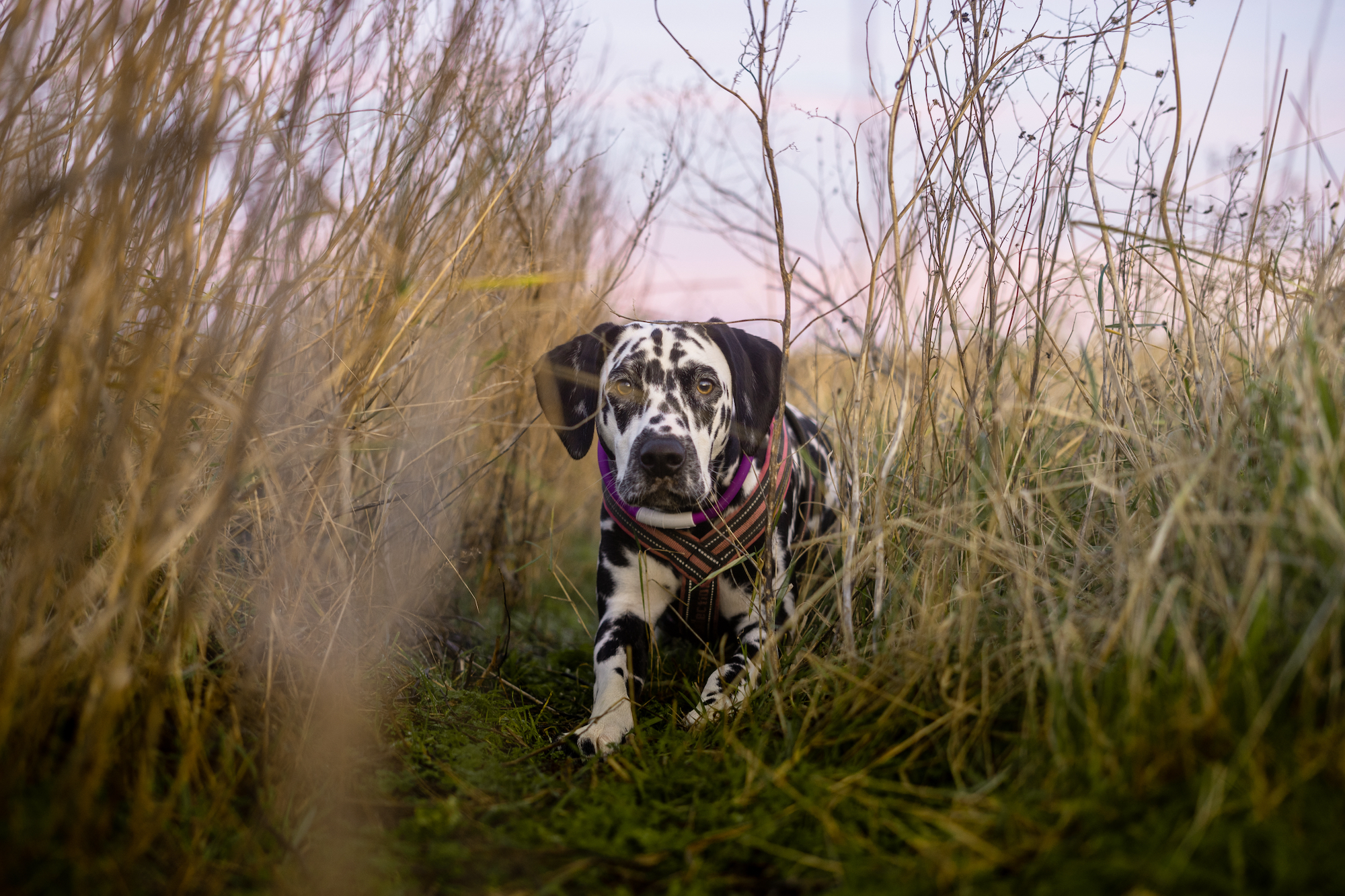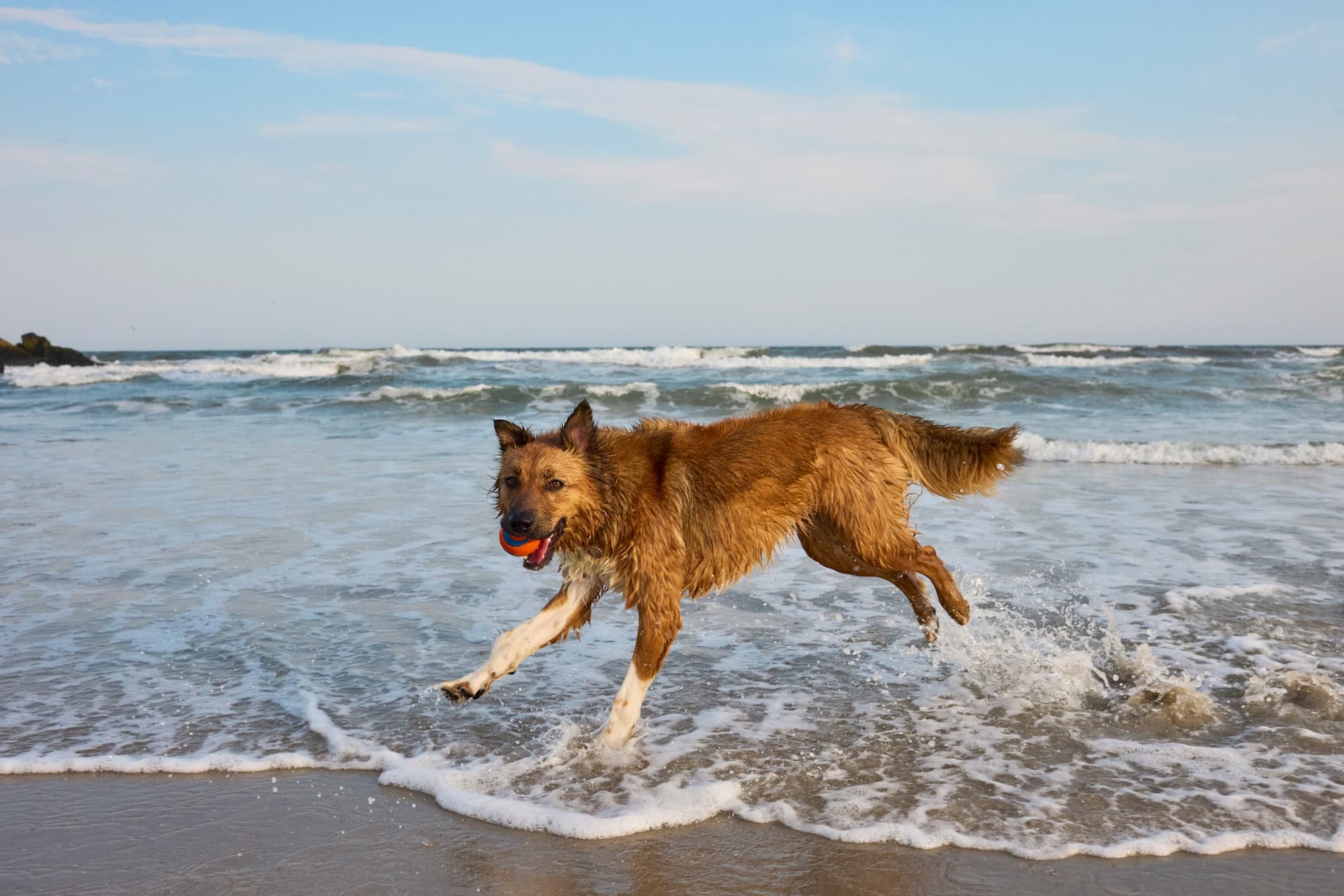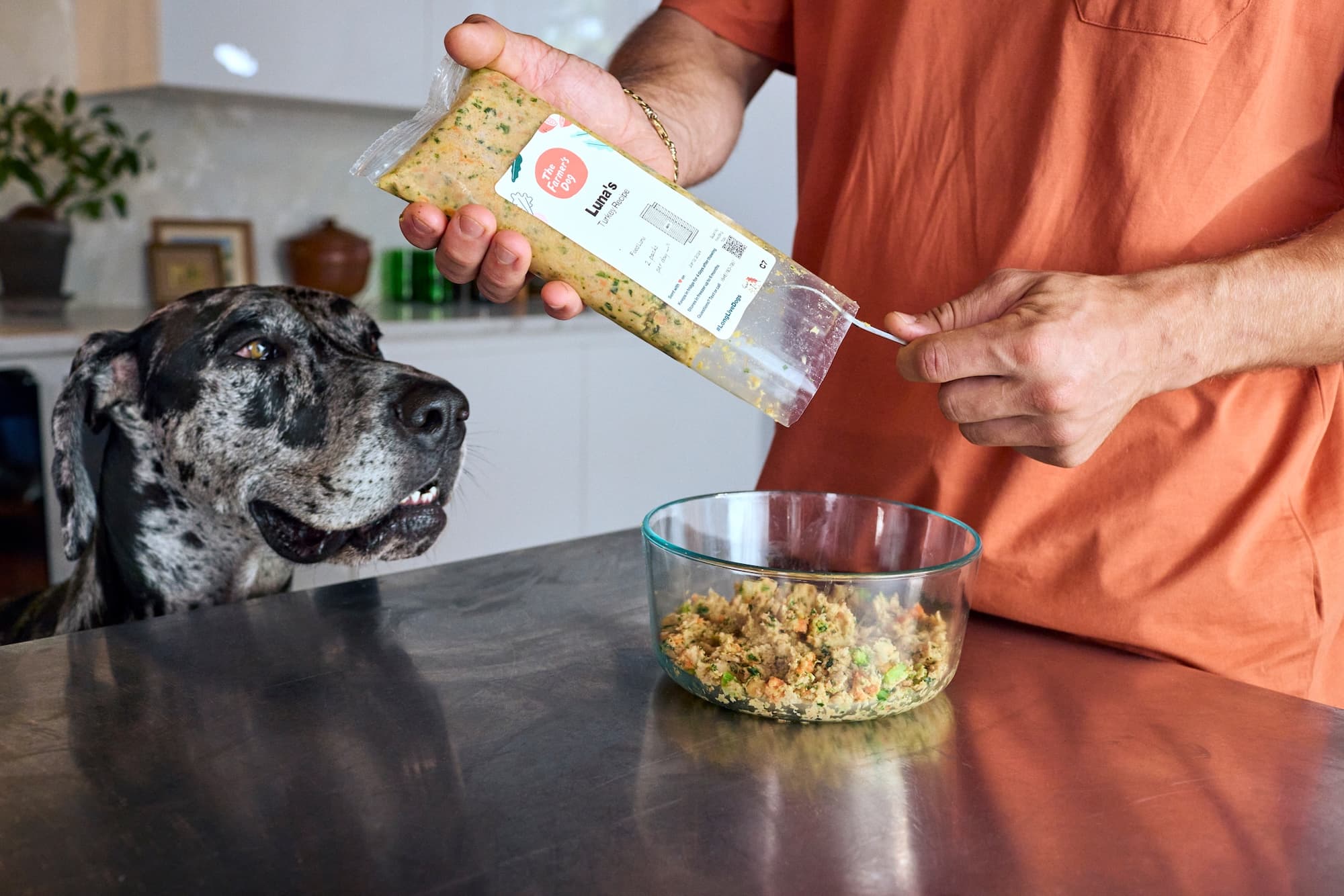When the spooky season rolls around, it brings a few things into your life and your home: ghouls, goblins, the odd political figure or incongruously “sexy” animal—and candy. Bowls, pillowcases, and jack-o-lanterns full of candy.
You are your own candy-control authority, but you also need to act as a treat gatekeeper for the canine members of your family. To help prevent any real Halloween horror, we’ve conjured a quick guide to which seasonal treats are strictly off-limits.
Should you give your dog Halloween candy at all?
The short answer is no. Maybe you live somewhere where they’re handing out baby carrots (Boooooo!)—but, for the most part, Halloween treats tend to be made of sugar, chocolate, and combinations thereof. Dogs can consume sugar in the form of fruit, but it’s a good idea to steer clear of processed sugar. Sugar is not toxic per se, but—as it does in humans—it can contribute to dental disease, acute pancreatitis, diabetes, obesity, and inflammation in dogs, and can also cause stomach upset. Chocolate is a strict no-no, as it’s toxic to dogs (see more below).
Here’s a breakdown of some classic candy and just how dangerous it is for dogs.
Less dangerous, but still skip
“Candy”
We’re talking about your colorful, sugar-forward treats like candy corn, Skittles, and Lemonheads. These treats aren’t toxic, but are full of sugar, corn syrup, dyes, and other things that aren’t good for a dog’s teeth, stomach, or waistline. Small, hard or chewy candies can also be a choking hazard, so resist the temptation to share the rainbow.
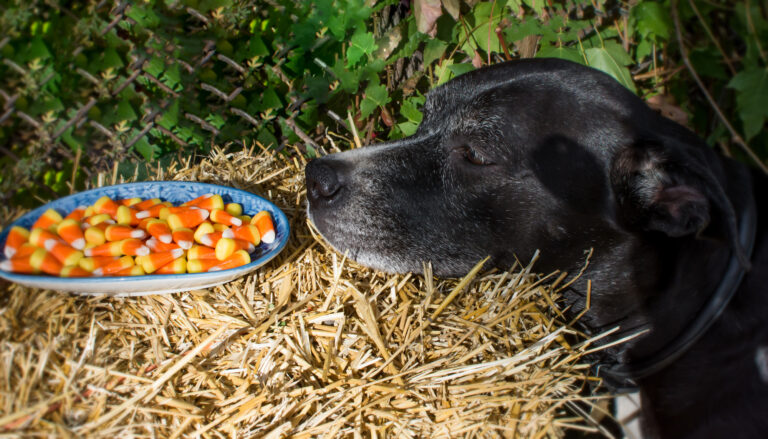
More dangerous, strictly avoid
Chewing gum
Chewing gum is not an appropriate treat for dogs for many obvious reasons—but the most pressing reason to avoid it is that it often contains xylitol, an artificial sweetener that is extremely toxic to dogs.
“Sugar-free” and other artificially sweetened candy
Again, these treats often contain xylitol, which is an ingredient to be avoided at all costs.
Chocolate bars
You may have heard that chocolate is bad for dogs, and it’s no Halloween myth. Chocolate contains theobromine and caffeine—compounds belonging to the group methylxanthine alkaloids. Dogs have a much harder time metabolizing them and they stay in their system much longer. Theobromine is toxic to dogs and affects the central nervous system, heart and respiratory system.
Consumption of chocolate can result in significant illness, and, in rarer cases, death for dogs.
The amount of theobromine varies from one type of chocolate to another. Here are a few common types of chocolate listed in descending order of theobromine content (and level of danger to dogs):
Cocoa powder and baker’s chocolate: the most theobromine and the worst for dogs. Also not commonly found in Halloween hauls.
Dark chocolate bars: Also high in theobromine and dangerous for dogs.
Milk chocolate: Less theobromine, and less dangerous, but still to be avoided.
White chocolate: Contains no theobromine, so is unlikely to poison dogs. However, any “chocolate” bar tends to contain loads of fat and sugar and is therefore never a good option for dogs (white chocolate should also be avoided because… really, why?).
To put all of this in terms of everyday chocolate products you might have on hand, a name-brand, full-sized (1.55 oz)., milk-chocolate bar has about 64mg of theobromine.
Toxic doses of theobromine have been reported as low as 20mg per kilogram of a dog’s body weight (1 kg is about 2.2 pounds). A dose this size is likely to cause agitation, hyperactivity, and gastrointestinal symptoms.
The most common Halloween chocolate tends to come in “fun-sized” bars (about .5 oz) that combine milk chocolate with nuts and caramel. These mini bars contain much less theobromine—less than 20mg/kg—and are relatively low on the chocolate danger scale. Still, if you’ve got a small dog, even a small amount of chocolate can cause illness, so steer clear. You can use chocolate “calculators” like this one, to help you determine the relative toxicity of that sneaked chocolate bar. But if you suspect that your dog has gotten into any chocolate, or you’re not sure just how much, it’s a good idea to contact your vet as soon as possible.
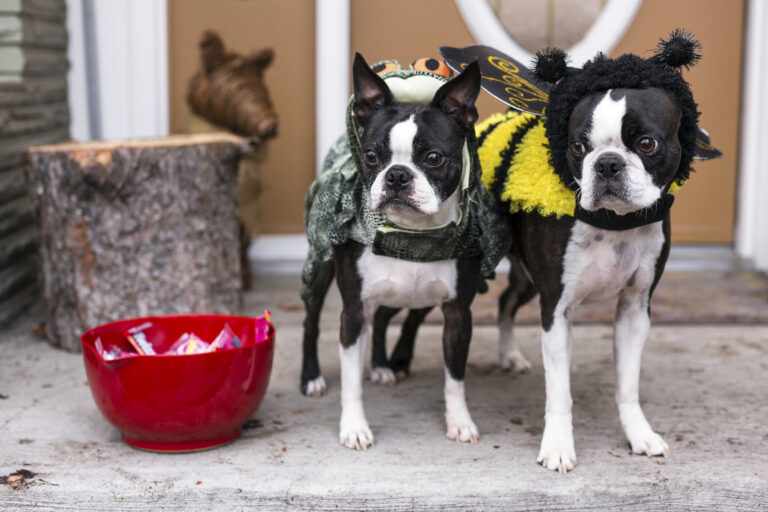
Raisin-based treats
Chocolate-covered raisins have been known to cause disappointment among Trick-or-treaters, but they have more serious repercussions for dogs. This treat is a double-whammy of danger for your dog as raisins (and grapes) are also toxic to dogs and should never be fed in any quantity.
So, during Halloween, keep all treats out of reach of your dog (making sure to factor in your dog’s ability and inclination to jump up on countertops). Vets tell us they typically see an uptick in pancreatitis cases during holidays like Halloween, due to dogs digging into candy and other off-limits table scraps during parties.
If you want to provide a sweet, seasonal treat, you can’t go wrong with offering booberries (that’s blueberries) or strawberries. Your dog can also partake of that seasonal favorite, pumpkin. Serve it pureed, with no added sugar or spices.
And if your dog doesn’t have good “leave it” skills, Halloween can be a great reminder to teach them–whether it’s a candy bowl, an errant chocolate bar on the street, or a spirit floating by, there will always be things you want your dog to leave alone.
